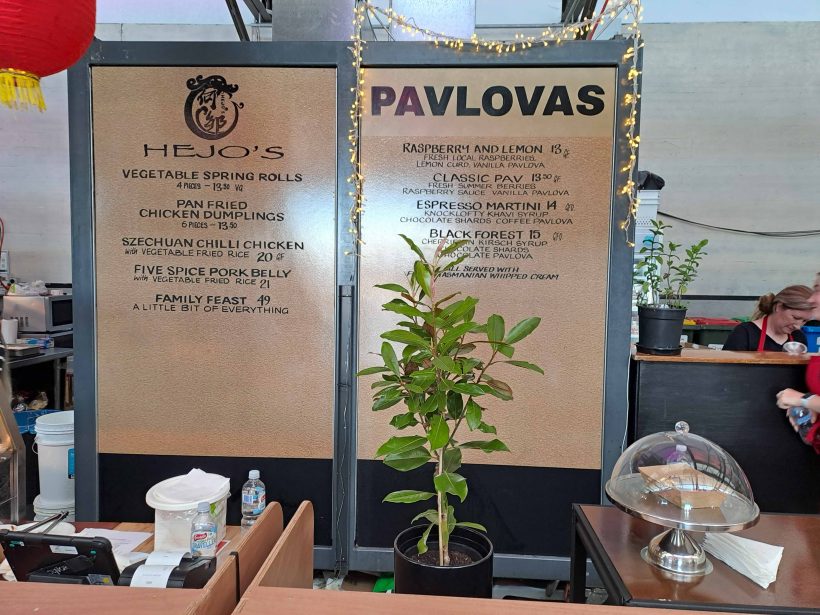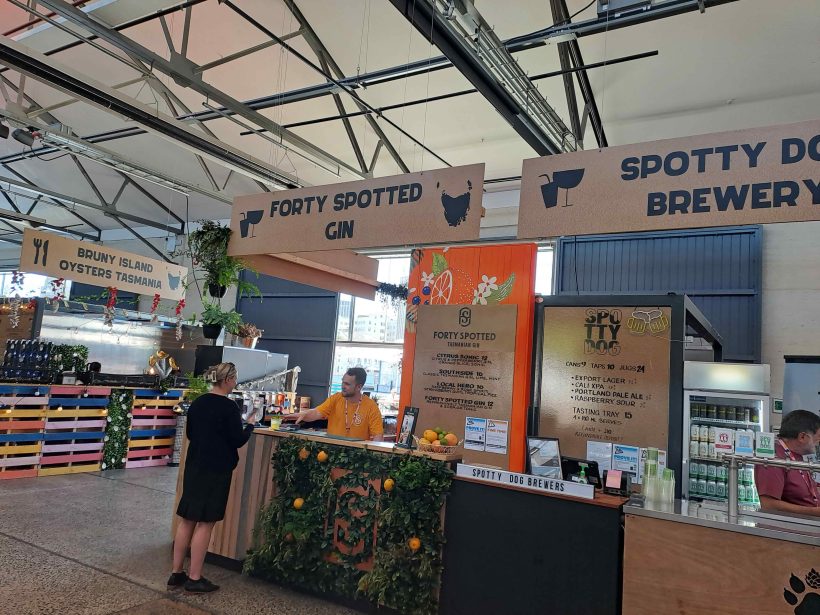I think that’s the question for 2024 – how much oomph has Tassie’s Taste Festival got left?
How the Mighty have fallen!
Aaah! Summer in Hobart always holds great excitement, particularly with the arrival of the lean greyhounds of the sea from Sydney, hungry and thirsty sailors keen to slake their thirst and assuage their hunger in celebratory excess.
The buildup to the festivities is keenly anticipated by not only Hobartians, but also the holiday makers who flock to our port city from interstate and overseas.
What’s their jam? Mainly it’s the transformation of the rejuvenated PW1 site into the jewel in the crown of our summer festivities, Hobart’s very own, “Taste” festival.
I’ve been watching with interest, and at times, delight, this spectacle for over 25 years, in its various guises. But this last event?
Sadly, far from the glory days of the Taste of Tasmania – when in 2010 to 2012, after a steady buildup of numbers over the early noughties it went from 200,000 people over the 7 days, to the height of the event when approximately 300,000 people came through the doors in 2012.
What drew that number to the 7-day event, and what led to the current day when over 9 days we got about 100,000 people through the gates? In total??

The first thing that’s a major point of difference is the organisers, this used to be a Hobart City Council run event, now it’s privately run.
Taste, as it’s affectionately known, was originally run to:
- Showcase Tasmanian food producers, small businesses that needed a vehicle to ply their wares. It gave them the opportunity to trial new, or proven offerings, (and to make a bit of black money to get them through winter, but I didn’t say that!)
- Give college kids an opportunity to work on a stall, to make a bit of holiday money and to gain valuable customer service experience.
- Be mainly a food festival, with a major beer sponsor, and just a very few wineries and artisan drink producers starting to creep in in the 2000’s.
And then, there was the entertainment:
- The Buskers circle out the front was an amazing spectacle, performers from all over the world would wow and cajole the crowd.
- A Food Theatre offered multiple shows a day, live cooking, interviews, tastings and more was a popular destination.
- Paid Tours around the site gave punters a chance to talk directly to producers and learn their story and the provenance of their products.
- Live bands and other entertainment were a constant around the site with various popup stages to complement the main stage, and the focus was on Tasmanian artists with maybe a headline Australian act for New Years Eve.

But the over-riding feeling was of large crowds with dollars to burn – sure there were big queue at popular stalls, but the stallholders were making money, and if you wanted good food?
You queued.
There were generally not too many quieter times, and the site spread from the wharf area where the yachts were tied up, across onto Parliament lawns for the kid’s area and onto Salamanca lawns.
Now?
Let’s look at the highlight reel first. Out on the Salamanca lawn side was the Raspberry Gin lounge, a fantastic colourful space opposite the mainstage. It looked great and everyone loves Tassie raspberries.
In the Cloverhill atrium at the back was of course the Cloverhill lounge, classy, welcoming and with a great product the stall was offering professionally and entertaining Tastings and a suite of sparkling Tasmanian wines.
That was about it, not much else stood out. The offerings from around the site were heavily influenced by alcohol offerings, mainly gin distilleries with one good whisky distillery.
Foodwise it was like a food hall with multiple offerings of multicultural food, but the Tasmanian provenance, sadly and very obviously lacking.
It used to be that you had to sell all Tasmanian produce to get a look in. Not now.

In the atrium someone was selling chips and gravy, they also had chicken, origin not mentioned, and whitebait from WA. There were a couple of oyster producers at least, but at $27 for 6 oysters?
Here’s the next elephant in the room: cost of offerings.
Taste used to have on all food menus a Taste plate which was $8, a small “taste” of what was sold to allow customers to try several different options and then maybe come back for a larger serve. So, inflation might lift this up to $10, but,
…when you’re faced with menu items ranging from $18 to $48, how affordable is this for the average punter?
While other factors do affect the pricing, and that involves the cost of participation – yep, organisers are responsible to an extent.

Then there are the aesthetics of the site:
- It looks tired and unattractive, (me on a bad hair day?)
- The wooden stall fronts and name font of the stall look cheap,
- and a lot of the stalls themselves are not appealing to look at. (There’s a cost involved in that, but conversely if it looks good?)
So now we wind up, and ask ourselves what can be done?
Here’s a couple of suggestions – I’m sure we all want to see it thrive and survive:
- With private enterprise comes the ability to get a major sponsor onboard with naming rights, but you have to have something to offer.
- With this money, if put into the event, and not looked at as a way of getting profit, could come reduced costs to get involved, and attract a greater quality stallholder.
- Next is don’t call it Taste if most of the offerings are booze, in one section inside was one oyster producer and 4 alcohol stalls together. Not great RSA!
- Better signage, better layout.
Through the State Government, Events Tasmania will be funding the Taste of Summer to the tune of $7.7 million over the next 5 years to ensure the event keeps running.
Minister Nic Street said at the launch of this year’s event that the Festival is renowned for producing world class food and beverages, sadly from a food perspective, chips and gravy isn’t cutting it.
Cheers, The Dish



